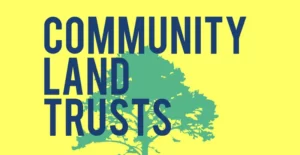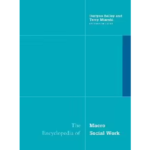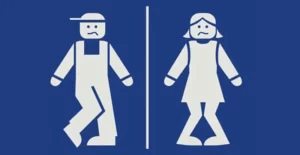Steven Soifer, PhD
Jeff Singer, MSW
ABSTRACT: This paper describes a successful nonviolent social action campaign to restore Maryland’s Disability Assistance and Loan Program (DALP) to low-income citizens with medical disabilities. This case example is important since it shows how protests can successfully achieve results in this era of state and federal attacks on the social wage. The active involvement of graduate social work students through projects in their social action and community organizing classes ultimately helped restore the program. [Article copies available for a fee from The Haworth Document Delivery Service:1-800-342-9678. E-mail address: getinfo@haworthpressinc.com]
KEYWORDS. Disability, social action, community organizing, low-in-come, cash assistance, DALP, TEMHA, Glendening, State of Maryland, graduate social work students, welfare
In 1995, a unique and successful social action campaign was waged to force the Governor of Maryland to partially restore a general assistance program for people with disabilities. Using an “insider-outsider™ strategy and with the media’s help, the campaign was designed using Lipsky’s (1968) classic resource mobilization article as a guide for action. The theoretical
Steven Soifer is an Associate Professor, at the University of Maryland at Baltimore, School of Social Work, 525 W. Redwood Street, Baltimore, MD 21201.
Jeff Singer is the Public Relations Director, at Health Care for the Homeless, 111 Park Avenue, Baltimore, MD 21201.
Journal of Community Practice, Vol. 6(2) 1999
© 1999 by The Haworth Press, Inc. All rights reserved.
Page 1
| JOURNAL OF COMMUNITY PRACTICE |
underpinnings of the campaign were based on nonviolence theory, as articled and refined by a number of classical and recent theorists (Albert, 1985; Inks, 1989; Sharp, 19732; Sharp, 1973b; Sharp, 1973¢; Thoreau, 1993). The incorporation of social work students, faculty, and practitioners into the campaign made a significant difference in its ultimate success.
This campaign worked to protect a small portion of the social wage, that various benefits programs issued by the government at the city, state, and federal levels. The current corporate drive to maximize profits regardless of nan costs has two important effects in the public sector, First, the social ge is under fierce attack; federal, state, and local governments announce early reductions in health, education, housing, and welfare programs. Secondly, public spending is being shifted from programs that benefit rking and poor persons to those which benefit corporations and wealthy individuals. These dramatic changes in public spending permit the transfer of venues from the public sector to the private for-profit sector, and from sons of lower incomes to those with higher incomes (Baker, Faux, Rasell, & Vicky, 1997; Bread and Peace, 1997; Chomsky, 1995; Disabling social security, 1996; Greenstein, Kogan, & Nichols 1996; Personal responsibility, 77; Porter, 1997).
The ever-more skewed distribution of wealth in the United States is both cause and consequence of this phenomenon. But an important tactic by corporate sector to justify these changes in public policy is the concerted ault-ideological, economic, and political-on “welfare” in its many forms kept, of course, for corporate “welfare™). Much attention has been paid to transformation of the welfare system for families (especially Aid to Familia with Dependent Children, or AFDC), but much less interest has been used on public assistance for single persons (Supplemental Security In-ne on the federal level and General Assistance on the state and local els) (Collins, 1996; Henwood, 1993; Weinberg, 1997; Wolff, 1997). As of 1993, 31 states and the District of Columbia had statewide General assistance (GA) programs and 10 states had GA in only some jurisdictions. ly 9 states had no form of welfare for single adults. The eligibility requirements for these programs vary widely, as do benefits. In 1992, the average refit was $215 per month-approximately 36 percent of the poverty line ichols, Dunlop, & Barkan, 1996; Uccello, McCailum, & Gallagher, 1996). Beginning in 1992, harsh state cutbacks were announced in GA programs Michigan, Ohio, and Maryland. Other states quickly followed-California 1 New York being the most publicized examples. Program reductions rerally entailed eliminating eligibility for employable adults, Advocates in S¢ states correctly predicted increases in homelessness, emergency room :, and begging (Nichols et al, 1996; Uccello et al., 1996).
In January 1995, Parris N. Glendening, the newly elected Democratic
Page 2
| Steven Soifer and Jeff Singer|
governor of the state of Maryland, surprised and shocked most political observers and citizen advocates by completely eliminating the $48 million dollar state Disability Assistance and Loan (DALP) and Primary Care Initiative (PCI) programs, the remaining remnant of Maryland’s General Program Assistance (GPA). Glendening had the distinction of being the first governor to propose eliminating GA to persons with disabilities. He defended the budget cut to the state legislature by saying: “It just does not make sense for us to nip and tuck and cut our priorities of education, safe streets, business growth and jobs to support a $48 million Maryland-only welfare system ™ {Glendening, 1995). These remarks would come back to haunt him many times in the next year. No doubt the driving force in the Governor’s decision was his razor-thin gubernatorial election over a right-wing Republican challenger.
DALP and PCI, which were entitlement programs, had provided $157 per month to 22,000 indigent Marylanders with certified medical disabilities, This meager assistance was in the form of cash plus limited medical benefits to 10,000 recipients. Three-quarters of DALP recipients lived in Baltimore City; the majority were African-American males. All had been judged by a medical professional to be unable to work and none had any income (The FY96 DALP Budget, 1996).
When the program elimination was announced, advocates went into high gear. Two new groups were immediately formed to fight the cuts—the Maryland Disabilities Action Coalition (MDAC)~a mainstream group comprised of service provider organizations such as Action for the Homeless (AFTH) and Health Care for the Homeless (HCH), as well as individuals; and Action for Disability Assistance (ADA)-a small group of social activists willing to use confrontational strategies and tactics, including civil disobedience, in order to restore the program. Members of these groups included students from community organizing and social action classes the authors taught over the course of two years.
These groups pursued a four-pronged strategy:
- convincing public officials and others in power (for example, the business community) that the reductions in disability assistance were not “cost-effective” leading to increased emergency room and public safety costs and diminishing the quality of the downtown business environment;
- generating wide-spread and visible public support for the restoration of disability assistance (for example, persuading the public, through the media, to communicate the message “Restore DALP™ to elected officials and “reference publics” (power holders) (Lipsky, 1968);
- conducting a non-violent, direct action campaign, including civil disobedience, against the governor {Maryland is one of four states in the country in which the governor proposes a budget and the legislature can only cut it);
- organizing recipients of disability assistance to advocate on their own behalf.
Page 3
| JOURNAL OF COMMUNITY PRACTICE|
A common theme united these strategies: the DALP was a safety net for impoverished persons with disabilities, it was not traditional welfare. It was essential to clarify the distinction between welfare and disability assistance to macerate public sympathy in an atmosphere already poisoned against patriciates in welfare programs.
Through a series of events coordinated by MDAC and ADA, advocates were quickly able to put the Governor on the defensive, Newspaper articles, television reports, and radio coverage abounded about the negative impact of : cuts, and the Governor was excoriated for his decision to eliminate the program. Even some in the business community roundly criticized the Governor’s decision.
Intensive lobbying efforts by MDAC, especially through its member orgazations AFTH and HCH, were beginning to have an impact in the State gislature. For example, HCH presented the Governor with petitions signed over one thousand poor and disabled Marylanders in protest of the cuts. “TH, during its annuval lobby day in Annapolis, made the restoration of ALP one of its top priorities. At a rally with over 500 low-income people sent, Lieutenant Governor Kathleen Kennedy Townsend, 2 member of the :nnedy clan, made the worst faux pas of her young political career trying to fend the DALP cut when she stated: “We [the Administration] thought that : BALP program was not within those three categories {job creation, 100! improvement, and crime prevention]. It would better if more of them d a job” (Frece, 1995), This infuriated an already angry crowd. She later ¢d to mitigate the harm of her remarks by saying that she had once slept in helter for the homeless~which hardly diminished the crowd’s antipathy. Meanwhile, ADA engaged in a variety of confrontational actions, includ-1 civil disobedience at the Governor’s office, which lead to four arrests clivists arrested, 1995). A social action class planned and implemented a weh through the statehouse, chanting demonstrators, and guerilla theater tside. AFTH, HCH, and ADA worked together to sponsor “Glendening- le” (a takeoff on the Hooverville’s of the 1930s) at Baltimore’s Inner bor, the foremost tourist attraction in Maryland. Meanwhile, many people re writing letters 10 the editors of The Baltimore Sun. Final] y, after activists it with that newspaper’s editorial board, The Sun published an editorial ethicizing the Governor, in which it stated: “Cutting DALP may prove that svernor Glendening is no bleeding-heart liberal, but it casts doubts on his untied ability to tell the difference between wise budget cuts and those that more harm than good” (Where’s the DALP safety net? 1995).
Page 4
| Steven Soifer and Jeff Singer
All this activity eventually forced the Governor to replace DALP with new programs called the Temporary Emergency Medical and Housing Assistance (TEMHA) and Primary Care for the Medically Indigent (PCMI), the former funded at about $10 million (29 percent of the DALP appropriation), and the latter at about 87 million (about 50 percent of the PCI appropriation). TEMHA provided some former DALP recipients with $50 housing vouchers (some up to $100) and free toiletry kits. Needless to say, this was only a drop in the bucket, and as it turned out, only a small percentage of former DALP recipients actually apptied for them. Moreover, TEMHA and PCMI were no longer entitlement programs (Carter, 1995).
After the legislative session concluded in early April, MDAC and ADA continued their campaign to restore DALP. In particular, ADA engaged in a nonviolent action campaign designed to annoy the Governor so much that he would restore cash assistance. Some of the events included a mock funeral procession (with a DALP casket) through a disabilities forum at which. the Governor was the keynote speaker. A 1995 social action class created, planned, and organized this event. At the forum itself, when the Governor rose 10 speak, about 15 social work student protestors dressed in black with letters on their backs spelling “Restore DALP Now” stood up, turned their backs to the Governor, and remained standing until his speech was over, The Governor, red-faced throughout his talk, had to improvise his speech and‘address the DALP issue because of the attention drawn to the demonstrators.
Chants of “Restore DALP” filled the hal] as the demonstrators walked out, and the demonstrators confronted the Governor as he left the building. The Associated Press covered this event and it garnered media COVErage across the state, and was noted in The Washington Post-all to the chagrin of the Governor. This demonstration was probably one of the early turning points in the campaign (At Forum on Disabled, 1995; Pemberton, 1995; Zorzi, 1995).
At the same time, HCH and AFTH launched a newsletter, “TEMhuh?™, to publicize the shortcomings of the new programs. Monthly editions of “TEM-huh?” including articles by former DALP participants, were sent to state officials, legislators, media outlets, and activists. Also, in collaboration with the Baltimore Homeless Union, an attempt was made to organize former DALP participants into a group which could independently advocate for social change. Although a series of meetings was held at HCH and the downtown public library (one meeting drew over 40 participants), the fledg- ling organization never developed sufficient stability to function autonomously (although former DALP participants continted to be actively involved in the campaign)
Throughout the summer and into the fall of 1995, DALP activists, social work students, and some recipients engaged in the tactic of “haunting” the Governor whenever he appeared in Baltimore (Sharp, 1973b). They appeared
Page 5
| JOURNAL OF COMMUNITY PRACTICE|
this interviews on television and radio, speeches to the Chamber of Comce, and a ribbon-cutting ceremony at the opening of a new business, At memorable event, ADA members tried to present the Governor with the :ptile of the Year Award,” complete with inflatable alligator, for the most blooded budget cuts in Maryland’s history, At each event, the Governor td redden and try to avoid the group, even using back entrances. Police and officers were mobilized to “protect” the Governor from demonstra-. ADA also called fora datly “Fast for DALP,” involving over 50 people. l, the Governor would not restore cash assistance, and insisted he Udn’t change his mind.
‘nally, ADA hit upon the winning strategy, The group decided to take the campaign to the Governor’s own neighborhood, a very small, upper middle-$ neighborhood outside College Park, Maryland (where the Governor that political science at the University of Maryland). ADA began by dissting flyers throughout the neighborhood informing residents about the ernor’s decision to eliminate DALP, asking them to telephone him with message to restore DALP. Next, ADA held a candlelight vigil outside the ernor’s home, attended by about 20 people. Then, in the fall of 1995 2 munity organizing class decided to surprise the Governor on Halloween t with about 30 students and activists in his front yard. When the Govern- s wife opened the door to greet the neighborhood children, she saw the onstrators outside. The Governor came home later that evening, and :ad of entering by the front door, he used the back door to avoid meeting protestors. ADA had also threatened to hold a homeless persons sleepout 8 neighborhood park.
I of these demonstrations had strong contingents of social work students practitioners, as well as a professor. Many of the students had worked on :campaign as a project for either a community organizing or social action .- One authors involvement in these various social action groups enabled to inform his classes about the campaign te restore DALP, with an eye to dng on it as their community organizing or social action project. Most ints in these classes decided to get involved in the campaign, and it was xhilarating experience for most of them. In each case, students would classroom time (as well as work outside the class) to discuss, brainstorm, in, plan, and implement a unique contribution 10 the ongoing campaign. € activities were coordinated with the existing community groups work-restore DALP.
Eventually, these confrontational tactics began to take their toll on the sor. In combination with four other events, they forced the Governor to ge his mind and restore cash assistance.
During the summer and early fall, groups such as ADA, AFTH, and HCH ed pressure 10 the Department of Human Resources (DHR). Advocates
Page 6
| Steven Soifer and Jeff Singer|
highlighted former DALP recipients who had become homeless due to the cuts to DHR. The Governor had pledged that no one would become homeless because of the program’s elimination. This was patently false. The Governor also said that if anyone did, DHR would take care of the problem. These groups decided to test publicly the Governor’s sincerity and approached DHR, accompanied by a reporter, to find housing for these homeless people. DHR tried but was not very successful. The media publicized these failures and the associated publicity led DHR to initiate a series of focus groups to discuss what could be done to improve TEMHA. A series of meetings between advocates and DHR workers led to the consensus that cash assistance had to be restored. The Secretary of DHR passed these findings along to the Governor, increasing the internal pressure on the Governor to restore cash assistance.
Pope John Paul II visited Baltimore in October 1995, and one of his major themes was helping the poor. He toured the City’s largest soup kitchen with the Governor (who is Catholic) where a number of prominent Catholics, including several bishops, had been asked to speak with the Governor about this issue.
In November 1995, AFTH and social work students from that fall’s community organizing class completed a survey that showed that only 20 percent of former DALP recipients had applied for TEMHA benefits. This, coupled with ar earlier Baltimore business organization’s survey that showed a 65 percent increase in homelessness in the city (in August, there were a record11 68 evictions in the city alone), formally documented and publicized through the news media the harsh negative impact the budget cuts were having on former DALP recipients” lives (Jensen, 1995).
Another fortuitous event, in an ironic way, was Governor Glendening’s deals to bring not one, but two, new football stadiums to Maryland. Pledging $273 million ir State funds to these stadiums, the Governor was immediately attacked by advocates and the press for finding money for sports teams but not being able to find money for the State’s poorest citizens. ADA held a demonstration during the news conference to formally announce the deal. With national news media present, one ADA activist, who also happened to have press credentials, ventured inside the media area. The Governor, unaware of his questioner’s identity, called on this ADA member. When the ADA activist began to criticize the deat and raise questions about DALP, the Governor reddened, the sound to the microphone was cut off, and the activist was almost arrested.
The final events were the protests at the Governor’s Baltimore office. Members of ADA, several of whom were social workers, twice visited the office in order to secure information about the Governor’s intended TEMHA budget for fiscal 1996-97. After being stonewalled once, the activists acted
Page 7
| JOURNAL OF COMMUNITY PRACTICE|
a second time with the intention of staying until the information was coming. Several people were prepared to engage in civil disobedience risk arrest, and indeed three activists, including a social worker who had just graduated ( and had been a student in one of the social classes that had worked on the DALP campaign). and a social work lessor was arrested on November 27, 1995. Those arrested, and the public surrounding them, were the proverbial straw that broke the camel’s (Baltimore 3, 1996).










+ There are no comments
Add yours